
If you’re used to flying Business Class in other parts of the world, including Australia, you would probably be disappointed with Business Class within Europe.
When you fly short-haul Business Class on a European airline, you’re actually just getting an Economy Class seat. The main differences are that the middle seat is left empty (except on SAS) and you get a meal on board.
This is clearly an inferior experience for passengers. But airlines love the concept and it’s widely accepted as the standard for short-haul Business Class within Europe.
What is European short-haul Business Class?
Most European airlines fit out their narrow-body planes with the same type of seats from tip to tail. When you book Business Class, you’re simply getting an aisle or window seat at the front of the cabin with a guaranteed empty seat next to you.
There is usually a curtain separating the Economy and Business cabins, to give Business Class passengers a bit more privacy. The cabin crew can move this curtain between flights. So, the curtain could be behind row 1 – or even behind the exit rows if demand for Business Class is high.
An exception is Brussels Airlines, where the only thing dividing Economy and Business Class is a small placard attached to a seat with Velcro.

Some airlines, such as British Airways, place a table on the middle seat. Others, like Lufthansa, just change the headrest to one that says “Your Space”.

Generally, European airlines still give Business passengers the usual priority ground services, baggage allowance and lounge access. That said, some airlines such as Finnair and Air France have now started selling Business Class “Light” tickets which exclude these things.
As a Business Class passenger, you could expect to earn a higher rate of frequent flyer points and status credits. You’ll also usually receive a complimentary meal and full drink service on board.

As the front half of the plane has the potential to be used as Business Class, many European airlines offer better legroom towards the front. (This does also mean that passengers sitting towards the front of Economy often get better legroom too.)
This is great for airline economics
There are several reasons that airlines love the European short-haul Business Class concept.
The obvious reason is that airlines can fit more seats onto their planes. For example, Delta offers 16 Business/First Class seats and 141 Economy seats on its Airbus A320. But Aegean Airlines has 174 total seats on its A320, which it could convert into 16 Business Class and 150 Economy seats. That’s 9 more Economy seats available to sell with the same number of Business Class seats, since the “Business” seats take up less space.

The leaner Economy seats also weigh less, reducing the airline’s fuel burn, and require less maintenance.
But the most significant benefit for airlines is the ability to change the size of the Business Class cabin on every flight. This really allows airlines to maximise their revenue as the demand for Business Class is very different on a Monday morning flight from London to Frankfurt, compared to a Saturday morning flight from London to Ibiza.
On airlines with “proper” Business Class seats, there is a fixed number of available seats. If nobody buys Business Class, the airline has no choice but to either fly those seats empty or upgrade people.
Conversely, the airline might forgo revenue if there are more people who want to book Business on a given flight than seats available. For example, Virgin Australia often sells out of Business Class seats weeks in advance on routes to Perth, Bali or Tokyo as there are only eight seats available. That’s not enough to meet demand on some routes.
On the other hand, superior seats offer a much better passenger experience. This not only leads to higher customer satisfaction, but also allows airlines to charge a higher premium for Business Class.
European Business Class can be good for passengers
Having a Business Class cabin without a fixed size can have advantages for passengers! For example, I was recently flying Business Class on a multi-sector itinerary within Europe and missed my connecting flight. Business Class was already “full” on the next available flight.
On an Australian airline, I would have either been downgraded or had to wait longer for another flight with Business available. But there were still empty seats in Economy on the next flight, so the airline simply “created” another row of Business Class to accommodate me.
On the other hand, since those middle seats are still perfectly serviceable seats, airlines like British Airways are occasionally tempted to fill them during disruptions.
I’ve personally flown short-haul Business Class in Europe a fair bit, and I don’t hate it. I don’t really need a bed on a two-hour flight. However – unfortunately – European airlines do also use short-haul planes on some longer flights. For example, Air Baltic uses an Airbus A220 with Euro-Business seating from Riga to Dubai – an overnight flight of almost seven hours.
At the end of the day, the seat comfort in European Business Class really can’t compare to a lie-flat bed or even an Australian-style 737 Business Class recliner seat.

Could Europe’s Business Class concept work in other markets?
Airlines in Europe can get away with providing an inferior Business Class product because everyone does it. Passengers flying within Europe have no alternative but to accept what has become the industry standard in that continent.
An exception is Turkish Airlines, which offers a full Business Class experience on its flights from Istanbul to destinations across Europe. That’s great for passengers flying to/from Türkiye (or connecting through Istanbul), but isn’t that helpful if you want to fly from Lisbon to Amsterdam.
Occasionally, you might be able to find an airline using a wide-body aircraft on an intra-Europe flight with long-haul Business Class seating. For example, Iberia often uses wide-bodies between Madrid and London. And Finnair sometimes uses Airbus A350s between Helsinki and London. But this is rare.

Outside of Europe, I don’t think this concept would work unless every airline got in on it. Otherwise, if customers had a choice, they would probably just fly with the airline that had the better Business product. The other airline would have to discount heavily to attract customers, which would also lose the airline revenue.
This is exactly the experience of Canadian airline WestJet with its “Premium” product. That was previously just an up-front Economy seat with a blocked middle seat, but the airline is now refitting its jets with “proper” premium seats.
Some airlines do use this concept in other markets, such as LATAM Airlines in South America, but they market the product as Premium Economy. (That’s probably a more accurate description of what European Business Class is.)

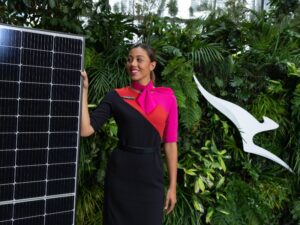

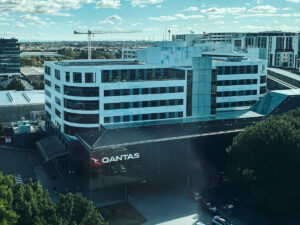


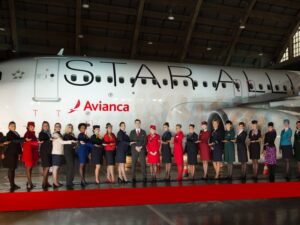




















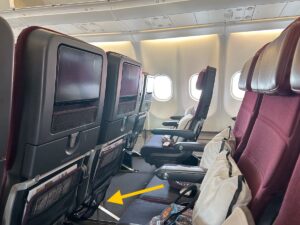
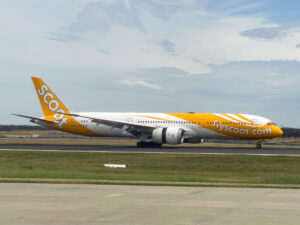


















































Community Comments
Loading new replies...
Join the full discussion at the Australian Frequent Flyer →